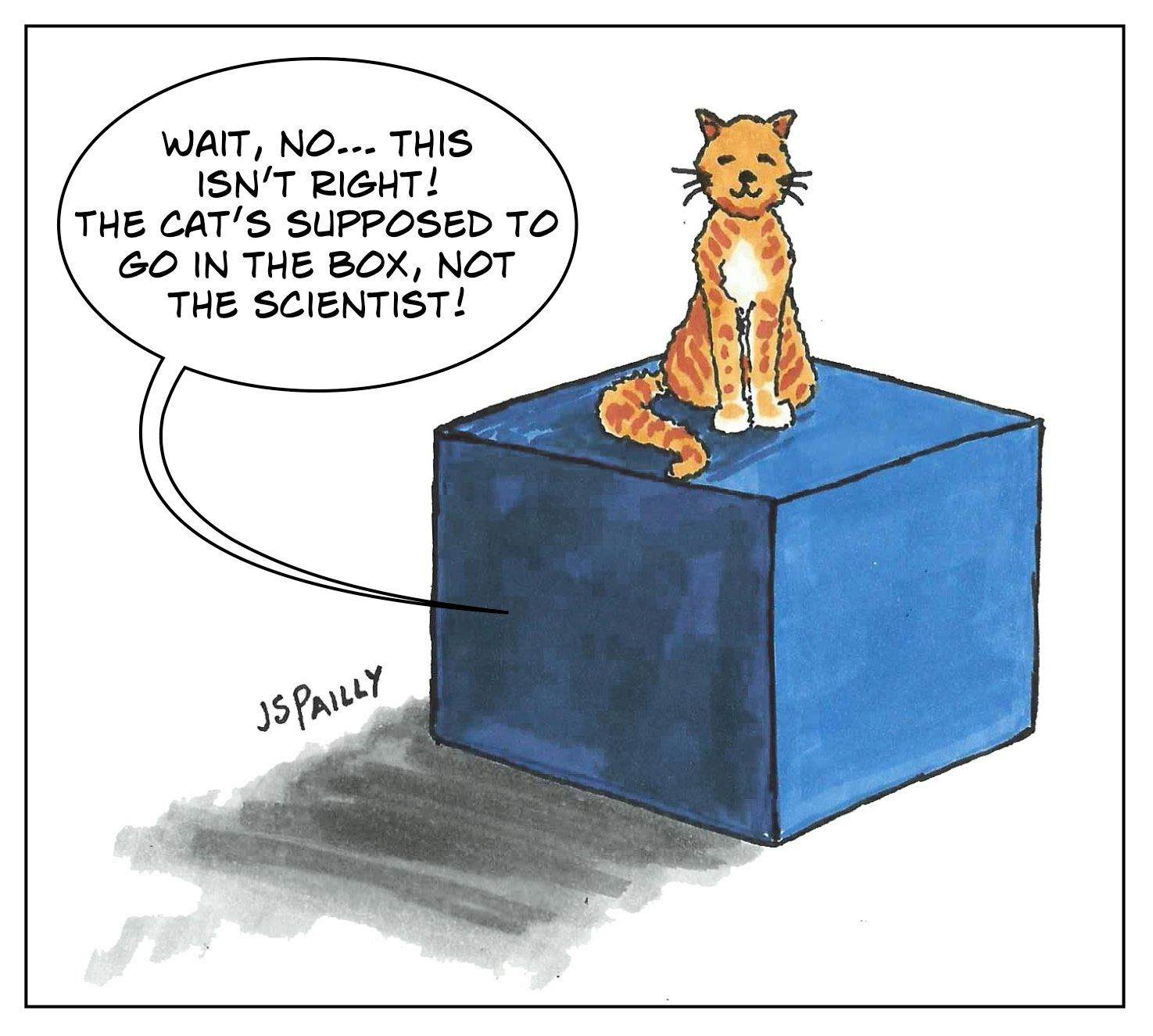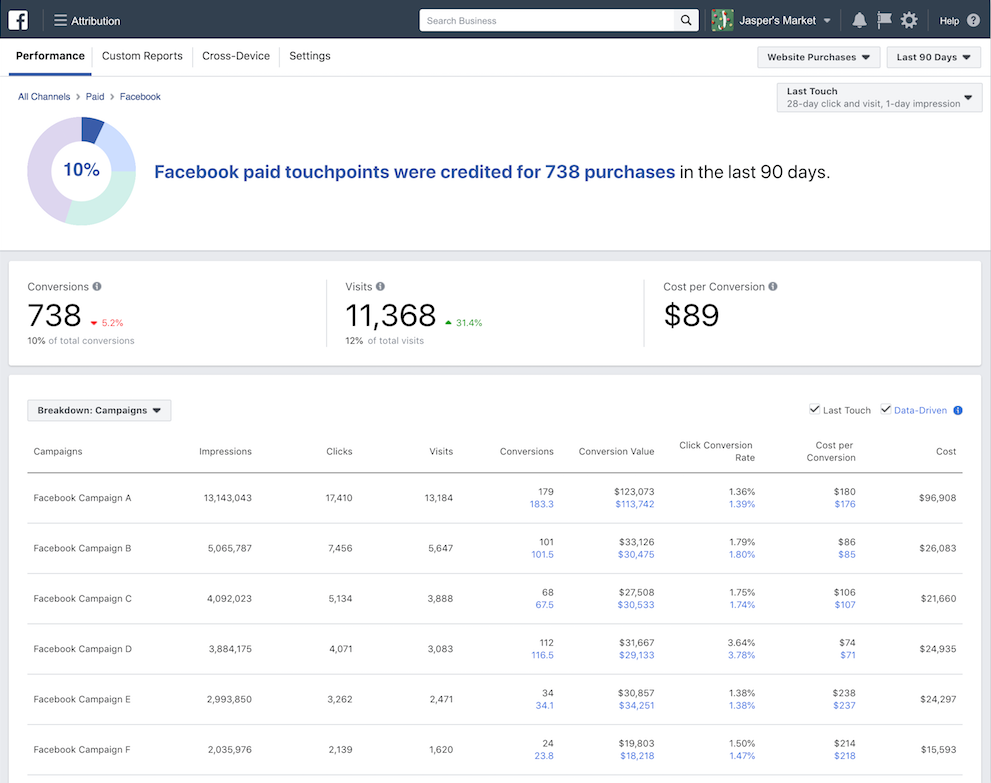Blog
MMM - Continuous is better than project-based
May 14, 2021 | Chris Kervinen

It is self-evident that measuring the effectiveness of marketing makes sense. As the great thinker Peter Drucker put it, “You can’t manage what you can’t measure”. Or to put it the other way, you can manage what you can measure. Even if your marketing seems to be working just fine and needs absolutely no fixing, how can you be sure it’s not broken unless you measure it?
Only quantum particles and Schrödinger’s cat’s positivity or negativity depends on measuring it. The rest have definitive outcomes regardless of the measuring. Outcomes that more or less define your day-to-day work – so it would be useful to have this information. But would you trust a measurement from five years ago? I would not.

Become a marketing scientist , instead of the subject. Image from planetpailly
The traditional approach to Marketing Mix Modeling (as well as to other modeling projects) is to launch a project every now and then to evaluate the effectiveness of marketing. It’s a bit like checking the map every morning on a very long road trip. The undertaking lasts maybe weeks or months as stakeholders scramble to gather data from a variety of systems and formats.
In an optimal case the project leaves the company with a set of applicable learnings that help setting the direction for the next five years or so until a new project is started. In between checkups you get a gut feeling that you’re not on the right route anymore, but it is really difficult to change the course without hard data to back up your call. So you play it safe and wait for the next results to prove you right…
"In between checkups you get a gut feeling that you’re not on the right route anymore, but it is really difficult to change the course without hard data to back up your call"
When you think about it, five years is a long time in today’s rapidly evolving world. For example Instagram skyrocketed from zero to 600 million active monthly users in a similar timeframe, empowering an entirely different approach to marketing. The project-based approach might be convenient for those who are used to it, but it is in no way applicable within the fast-paced B2C sector (or in some of the more dynamic B2B markets).
This doesn’t, however, stop some companies from holding on to the old world. As a result, the decision makers make risky choices working with outdated rules in a world where they do not apply anymore. Because the lessons from three years ago are most likely of little help when trying to understand why the campaign last month failed to deliver.
But as the subtitle suggests, there’s a better way…
Embracing a continuous approach in marketing mix modeling brings a host of benefits by enabling continuous testing and thus improvement. Especially the emergence of digital marketing has made marketing more susceptible to experiments. If a marketer has an idea, it is relatively easy to test it first with a small sample before going all-in on a larger scale.
Frequent, lightning-fast testing capabilities are one the main reasons digital marketing investments can be so easily optimized and justified to top management (which wants all things to work as profitably as possible).

Digital marketing has become widely popular partly due to its measurability and continuous optimization capabilities. Image from Facebook
There is no reason why the experimental mentality should not be adopted for the whole marketing mix. Besides pushing boundaries with online marketing, digitalization has made the constant integration of offline marketing data more feasible than ever, even if the number of marketing channels keeps increasing.
How? Most reporting and management tools tend to leave some sort of digital footprint, whether you’re dealing with online or offline media channels. And when the information can be transformed into digital format – that’s when the magic starts to happen. Or at least that’s when the algorithms can utilize the data. Which is pretty close to magic.
"There is no reason why the experimental mentality should not be adopted for the whole marketing mix. Besides pushing boundaries with online marketing, digitalization has made the constant integration of offline marketing data more feasible than ever, even if the number of marketing channels keeps increasing"
The continuous approach empowers a more systematic approach to marketing, which doesn't sound that fun for the creative unicorns we marketers aspire to be. But it has a clear connection to how good marketers we want to be.
Because we all want to be great in what we do. Some of us want to be the best, even. Systematicity is a must-have feature, bringing us closer to perfection with each round (but keep in mind that the cake is a lie – there’s no perfection, just extraordinarily great things). Your future self will thank you when you have methodically collected the data from a variety of marketing channels together and made it available to your team. You’ll be like one of those early Bitcoin-investors.
Continuous measurement of marketing effectiveness also makes it easier to integrate marketing and its measurement into the daily operation of business. It is sensible to set targets on a yearly or a quarterly level, but continuous measurement enables more transparent tracking of those goals and – above all – reacting before it is too late if targets are not going to be met.
If we go back to the road trip example, continuous measurement is like using a navigator (instead of glancing the map every morning). You’re always on the right path (or get instant notification when you’re about to take the wrong exit).

The continuous approach does require commitment, and commitment sounds scary to many people, but it brings lots of rewards. Mr. Drucker has another famous quote: “Management is doing things right; leadership is doing the right things”. Consistent leadership requires staying on top of your game every day. Not every five years. Not every six months. Great leaders know what are the right things to do every day.
So not only will continuous approach deliver better results businesswise, it’ll also help you pursue leadership instead of management. This win-win situation should be decent enough reward for anyone to consider moving from projects to continuous marketing mix modeling.
Curious to learn more? Book a demo.
Related articles
Read more postsNo items found!